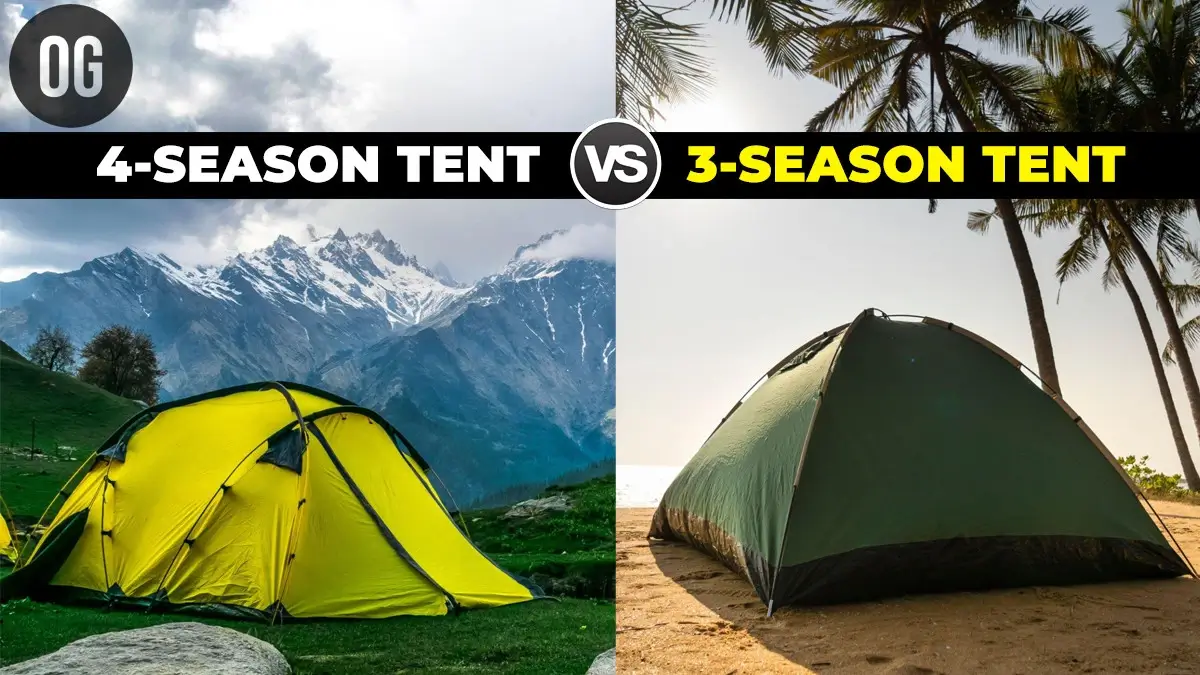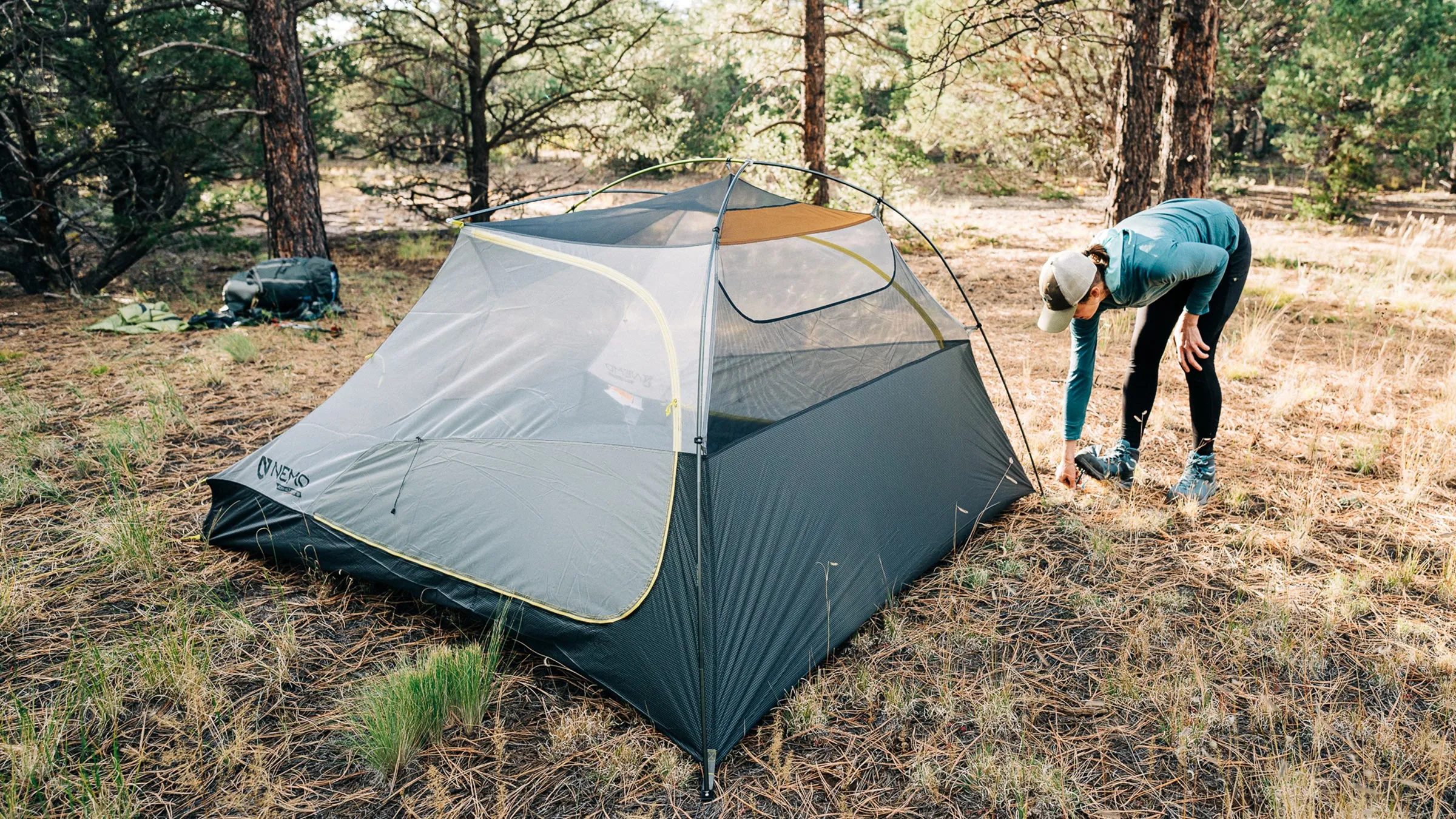
3 Season Tent vs 4 Season Tent: The Ultimate Guide to Choosing Your Perfect Outdoor Shelter
Choosing between a 3-season and 4-season tent can make or break your outdoor adventure. After testing dozens of tents across various conditions, I'll share everything you need to know to make the right choice for your camping style, budget, and the conditions you'll face. From lightweight backpacking shelters to bombproof mountaineering fortresses, this comprehensive guide covers it all. Visit ***NatureGuests*** for more outdoor gear insights.
Understanding the Basics of Tent Season Ratings

The tent season rating system isn't just marketing jargon—it's a crucial classification that determines whether you'll have a comfortable night's sleep or find yourself shivering in a collapsed shelter. I learned this the hard way during my first winter camping trip in the Rockies when my 3-season tent barely survived 40-mph winds and heavy snow accumulation.
The **3 season tent vs 4 season tent** debate fundamentally comes down to engineering trade-offs. Three-season tents prioritize weight savings, ventilation, and versatility for spring, summer, and fall conditions. They typically feature mesh panels for airflow, lighter fabrics, and simpler pole structures that keep pack weight minimal while providing adequate protection from moderate weather.
Four-season tents, conversely, are engineered for survival in extreme conditions. They sacrifice weight and breathability for structural integrity and weather protection. Understanding this fundamental difference helps explain why a ***3-season tent's temperature range*** typically doesn't extend to harsh winter conditions without additional gear considerations.
The classification system emerged from mountaineering communities who needed reliable ways to categorize gear performance. Three-season tents excel in temperatures typically above 20°F with moderate precipitation, while four-season tents are designed for sub-zero temperatures, heavy snow loads, and sustained high winds. This distinction becomes critical when your safety depends on your shelter's performance.
Key Differences Between 3-Season and 4-Season Tents
Structural Design and Pole Configuration
The most noticeable difference in the **3 season tent vs 4 season tent** comparison lies in their structural engineering. Four-season tents typically feature more poles, creating redundant support systems that prevent catastrophic failure. During my testing of the MSR Access tent in 30-mph winds, I witnessed how the additional crossover poles distributed stress loads that would have overwhelmed a simpler 3-season design.

Fabric selection represents another crucial differentiator. Three-season tents prioritize breathability with extensive mesh paneling, typically 30-50% of the inner tent surface. This design philosophy works brilliantly for warm-weather camping but becomes a liability when temperatures drop or wind picks up. Four-season tents minimize or eliminate mesh, using solid fabrics that create a warmer interior microclimate while blocking spindrift and wind-driven precipitation.
The rainfly design philosophy also differs significantly. Three-season tents often feature partial coverage rainflies that prioritize weight savings and ventilation over complete weather protection. Four-season tents extend rainflies closer to the ground, often including snow skirts that seal against drifting snow. This comprehensive coverage adds weight but provides essential protection when conditions deteriorate rapidly.
Ventilation systems reveal the core engineering challenge in tent design. Three-season tents excel at moisture management through passive airflow, preventing condensation buildup during warm, humid conditions. Four-season tents must balance ventilation with weather protection, often incorporating adjustable vents that can be sealed when conditions demand. Understanding these trade-offs helps explain why choosing the right tent depends heavily on your intended use conditions.
When to Choose a 3-Season Tent
Backpacking & Thru-Hiking
Three-season tents dominate the backpacking world for good reason. During my Pacific Crest Trail section hikes, every ounce matters when you're carrying your home for weeks. A quality ***3-season 1-person tent*** typically weighs 2-4 pounds compared to 4-6 pounds for comparable 4-season models.
Warm Weather Camping
The superior ventilation in 3-season tents becomes invaluable during hot, humid conditions. I've tested numerous tents in summer thunderstorms where the mesh panels prevented the suffocating condensation common in sealed 4-season designs.
Three-season tents excel in conditions where versatility and weight savings outweigh the need for extreme weather protection. These shelters shine during spring through fall camping in most temperate climates, handling everything from summer thunderstorms to early autumn snow flurries. The **3 season tent vs 4 season tent** decision often favors 3-season models for casual weekend warriors and dedicated backpackers alike.
Budget considerations also favor 3-season tents. Quality options start around $150-200, while comparable 4-season tents begin at $400-500. For campers who primarily adventure during warmer months, investing in a premium 3-season tent and quality sleeping system provides better overall value than a basic 4-season shelter. The money saved can fund essential accessories like a reliable sleeping pad or premium down sleeping bag.
Setup speed and convenience make 3-season tents attractive for frequent use. Simpler pole structures mean faster pitching times—crucial when racing approaching storms or setting up camp after dark. During my guide training, we could pitch most 3-season tents in under three minutes, while 4-season models typically required 5-7 minutes due to their complex pole configurations and guy-line systems.
The versatility of modern 3-season tents extends their usable range significantly. Many current designs incorporate features like vestibule configurations that handle moderate snow loads and reinforced guy-out points for wind resistance. When properly deployed with additional stakes and guy-lines, quality 3-season tents often perform adequately in shoulder-season conditions that might seem to demand 4-season protection.
When You Need a 4-Season Tent
Winter mountaineering and alpine climbing demand the robust protection only 4-season tents provide. During a memorable February ascent of Mount Washington, our group weathered 80-mph winds and -20°F temperatures that would have destroyed any 3-season shelter. The **3 season tent vs 4 season tent** comparison becomes academic when your survival depends on your shelter's performance in life-threatening conditions.
Snow loading presents unique challenges that 3-season tents simply cannot handle. Four-season tents feature steep wall angles and robust pole systems designed to shed heavy snow accumulation. I've witnessed 3-season tents collapse under 6-8 inches of wet snow that barely stressed a properly designed 4-season shelter. The engineering margins in 4-season tents account for dynamic loads from wind-driven snow and ice accumulation.
Extended exposure to harsh conditions reveals another crucial advantage of 4-season tents: durability. The heavier fabrics and reinforced stress points withstand repeated freeze-thaw cycles, abrasive ice crystals, and UV exposure at altitude that rapidly degrade lighter 3-season materials. During my Alaska Range expeditions, I observed how expedition-grade 4-season tents maintained structural integrity through weeks of harsh treatment that would have shredded ultralight alternatives.
Safety margins justify the investment in 4-season tents for serious winter camping. These shelters provide redundant protection systems that function even when primary features fail. Guy-out points, pole sleeves, and fabric panels all exceed minimum requirements, creating multiple backup systems. When rescue might be days away in remote winter environments, this engineering redundancy becomes a life-saving feature rather than luxury convenience.
Top Tent Recommendations and Reviews

Best 3-Season Tents
Big Agnes Tiger Wall UL2
After extensive testing across multiple seasons, this ultralight powerhouse consistently delivers. The dual-door design and generous vestibules make it ideal for couples or solo campers with gear storage needs.
Big Agnes Copper Spur HV UL2
The gold standard for ultralight backpacking. This tent has accompanied me on countless adventures, from desert canyons to alpine meadows. Exceptional build quality meets thoughtful design.
Best 4-Season Options
MSR Hubba Hubba NX
While technically a 3+ season tent, this versatile shelter handles light winter conditions admirably. The robust construction and excellent ventilation system make it a favorite among guides and serious backpackers.
North Face Stormbreak 1
An excellent entry-level option for solo adventurers testing winter camping waters. The proven design handles moderate winter conditions while maintaining reasonable weight and pack size.
When evaluating the **3 season tent vs 4 season tent** decision for specific models, I always consider real-world performance over marketing claims. The tents listed above have earned their reputations through thousands of nights in challenging conditions. For comprehensive reviews of additional options, explore our detailed guide to ***the best 3-season tents*** currently available.
Budget-conscious campers should also consider the Marmot Crane Creek series, which offers exceptional value without sacrificing essential features. During my testing, the Crane Creek 2P consistently punched above its weight class, handling conditions that challenged tents costing twice as much. These value-oriented options prove that the **3 season tent vs 4 season tent** choice doesn't always require premium pricing to achieve excellent performance.
Personal Experience and Expert Tips
Critical Factors Beyond Season Rating
The **3 season tent vs 4 season tent** decision extends beyond simple season ratings. During my years guiding in the Cascades, I've learned that local conditions often matter more than general classifications. A quality 3-season tent with proper setup can outperform a poor 4-season tent in identical conditions.
Seam sealing represents one of the most overlooked factors in tent performance. Even the best fabrics fail when water infiltrates through needle holes in the stitching. I always recommend purchasing additional seam sealer and treating key stress points before first use. Understanding ***whether taped seams truly mean waterproof*** protection can save you from unexpected surprises during critical moments.
Site selection dramatically impacts tent performance regardless of season rating. During storm conditions, I've watched 3-season tents thrive in protected locations while 4-season models struggled on exposed ridges. Natural windbreaks, drainage considerations, and snow depth all influence how any tent will perform. The best tent becomes worthless if pitched poorly in challenging terrain.
Maintenance schedules differ significantly between 3-season and 4-season tents. The complex pole systems and heavier fabrics in 4-season models require more frequent inspection and care. I recommend detailed gear checks after every trip, focusing on pole segments, guy-line attachment points, and zipper function. Small issues caught early prevent catastrophic failures when you need your shelter most.
Understanding your personal comfort thresholds helps inform the **3 season tent vs 4 season tent** choice better than any external recommendation. Some campers sleep warm and prefer the ventilation of 3-season tents even in cooler conditions, while others prioritize the security and warmth retention of 4-season models. Testing different designs in controlled conditions helps you understand your preferences before committing to expensive gear purchases.
Conclusion
The **3 season tent vs 4 season tent** decision ultimately depends on your specific needs, intended use, and local conditions rather than rigid seasonal categories. After testing dozens of tents across varied environments, I've learned that the right choice balances protection, weight, and versatility for your particular adventures.
For most outdoor enthusiasts, a quality 3-season tent provides the optimal balance of performance and practicality. These versatile shelters handle the majority of camping conditions while maintaining reasonable weight and cost. Upgrading to a 4-season tent makes sense only when you regularly encounter conditions that exceed 3-season capabilities—true winter mountaineering, extended cold-weather expeditions, or camping in areas prone to severe weather.
Remember that proper site selection, setup technique, and maintenance matter more than tent classification in many situations. A well-pitched 3-season tent often outperforms a carelessly deployed 4-season model. Invest time in learning proper techniques and understanding your gear's capabilities and limitations.
Whether you choose a lightweight 3-season shelter for summer backpacking or a bombproof 4-season fortress for winter expeditions, prioritize quality construction and features that match your intended use. The tent that keeps you comfortable and safe while matching your adventure style and budget represents the best choice, regardless of its season rating.
Ready to find your perfect tent? Explore more outdoor gear guides and expert reviews at NatureGuests

